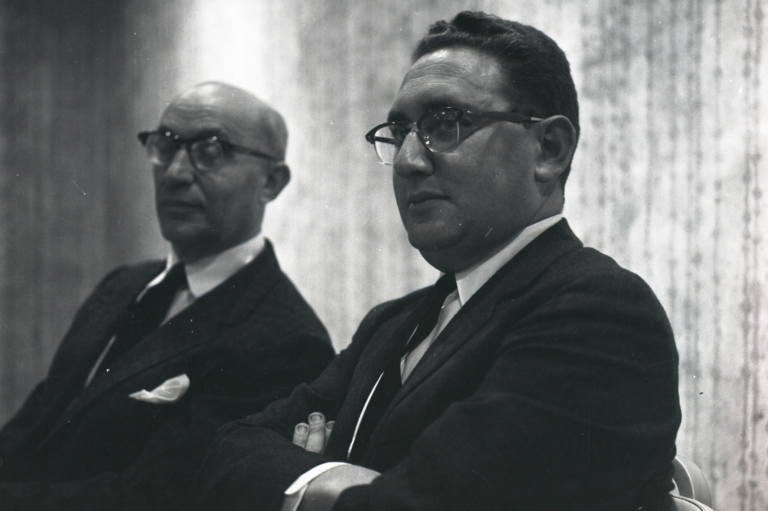March 4, 2005
Volume 7 / Number 9
Dear Colleague:
An inversion has occurred: Husbands and fathers who murder their wives and daughters instead of protecting them are now celebrated. Witness the success of Clint Eastwood’s Million-Dollar Baby and the near-success of Michael Schiavo’s effort to kill his wife, Terri.
Steven W. Mosher
President
A Million Dollars for Messrs. Eastwood and Schiavo
Euthanasia is enjoying its greatest renaissance in the Western world since Nazi Germany. Together with so many other social ideas first popularized in modern times by Nazis and Communists from abortion to easy divorce, euthanasia’s time may have come. Doctors in the Netherlands are euthanizing disabled infants even without parental consent, and Britain’s Labour government may be about to legalize widespread euthanasia there.
Our own state of Oregon has a physician-assisted suicide law. Hollywood’s elite, ever on the cutting edge of evil, gave its implicit imprimatur to exterminating the unfit to live by granting Academy Awards the other day to two movies that feature euthanasia, Million Dollar Baby and The Sea Inside.
The latter, which won the Oscar for Best Foreign Language Film, is a Spanish movie with small impact and circulation outside of arty circles.
It is also clear to prospective filmgoers what it is about: A man’s effort to kill himself legally. PG-13-rated Million Dollar Baby, which won Best Picture, is a major Hollywood release that has grossed $65 million already, and no doubt many people, including minors, went to see it with no idea that the film promoted the “mercy” killing of disabled people.
Director Clint Eastwood won Best Director.
The film revolves around the story of Maggie (played by Hillary Swank, who won Best Actress), a female boxer who achieves success with the help of coach and surrogate father Frankie (played by Eastwood), but then is gravely injured in a boxing match. I have not seen the movie and do not intend to since I do not enjoy watching women being beaten-even by other women. Therefore, I will not attempt to critique the movie artistically but only discuss undisputed plot points.
“First, Maggie becomes a ventilator-dependent quadriplegic, after once living a life of utter physicality. That would be difficult to adjust to even under ideal circumstances,” wrote Wesley J. Smith in the Weekly Standard. “But Maggie’s life as a disabled woman is anything but ideal.
Despite supposedly receiving the best of care she soon develops bed sores so serious that one of her legs is amputated. . . . Third, her venal and uncaring family refuses to visit, and when they do, she is pressured into signing over control of her assets. Fourthly, after trying to kill herself in a terribly painful way, she is force-sedated to prevent further suicide attempts. Frankie is in anguish over his friend’s plight and concludes that he is actually killing Maggie by letting her live. So, in his love for her, he overcomes his Catholic guilt and murders Maggie by removing the respirator and injecting her with an overdose of adrenalin.”
Hollywood has long loved to portray euthanasia, and so have other film industries over time. “Indeed, in the past movies were made as explicit propaganda to promote the legalization and legitimacy of active euthanasia,” Smith wrote. “The most notorious of these is the 1939 German movie I Accuse (Ich Klage An), a film that, with Goebbles’s blessing, both promoted voluntary euthanasia as well as the propriety of killing disabled infants-to blockbuster success at the box office. It is striking and disturbing how similar the plotline of Million Dollar Baby is to the voluntary euthanasia story in I Accuse.” The heroines in both movies ask their “their primary male companions (the husband in I Accuse and surrogate father in Million Dollar Baby) to put them out of their misery,” said Smith, a lawyer for the International Task Force on Euthanasia and Assisted Suicide.
Another primary male companion is out to eliminate a woman from the world but, unfortunately, these two people are real. And the woman never asked to be eliminated. Michael Schiavo has spent years trying to kill his severely disabled wife, Terri. Her end may finally have come, and if it does, it will set a precedent that will eviscerate the rights of the disabled in this country. Since Terri lives in Florida, the precedent will be especially ominous for the large number of retirees who live there.
“Judge Greer has ruled that she is to be executed March 18,” said Eleanor Drechsel, an activist who assists Terri’s parents, Robert and Mary Schindler, in trying to save Terri’s life. The case is an especially disturbing one because, among other reasons:
1. Terri never said or signed anything that said she would want to be killed if she ever became disabled. 2. Terri is not on life support. She receives food from a tube connected at mealtimes, but otherwise her essential functions perform unaided. 3. Terri is conscious. She responds to stimuli, watches people walk around her room, and sometimes even responds to commands. She is not in a vegetative state. 4. The man making decisions for her, her husband Michael, has already abandoned her. He lives with his girlfriend-he has called her his “fiancé”-and the two children he has had by her. 5. Efforts to rehabilitate Terri and teach her how to eat and speak ceased in 1991, the year after she was injured, even though some medical experts say it is possible such efforts could succeed. 6. Terri’s parents want to care for her, but Michael will not allow it or grant a civil divorce. 7. Terri was a practicing Catholic before she became disabled and as such most likely opposes euthanasia. 8. Over a million dollars awarded in a malpractice suit for Terri’s rehabilitation has instead gone to Michael’s attorneys’ fees and other expenses. Michael has consistently blocked rehabilitative efforts. If Terri had died earlier, Michael would have inherited a large sum of money, but now only $50,000 remains as far as anyone can tell publicly. 9. No one knows how Terri received her injuries but a pathologist reported that she had “a history of trauma.” There is no proof that Michael is responsible. 10. The plan is to murder Terri through starvation by denying her food.
It is illegal to kill animals this way in Florida because it is so cruel.
Court after court decision has come down on the side of death. The wishes of Florida’s elected legislators and governor have been ignored. Terri’s parents are still making last-ditch legal efforts to save their daughter, and the Florida Department of Children and Families has finally begun an investigation into whether Terri suffered abuse. But Judge George Greer won’t move the March 18 execution date. Terri’s supporters plan a vigil outside the Woodside Hospice in Pinellas Park, Fla. for March 12. For more information, go to www.terrisfight.org.
We live in an age when feminists are quick to tar all men as violent, in which judges often accept unsubstantiated accusations of domestic violence against men as fact, and in which men in general are portrayed as oppressors of women. But then when some agenda more important is at stake, such considerations are put aside. It happened in the O.J. Simpson case. It’s happening now in the Schiavo case. In the former, racial politics was more important than murder. In the latter, murder of the unfit to live through euthanasia is more important than a woman’s right to life.
Has Michael Schiavo fulfilled his duty as a husband? Did Clint Eastwood’s character perform his role as surrogate father? Is Clint Eastwood’s vision of disabled people true to life? “While it is true that many people who become quadriplegic later in life become very depressed and suicidal-like Maggie in the movie-studies show that such existential despair is not usually permanent,” Smith wrote. “Indeed, one medical report published several years ago found that the level of depression in people disabled later in life to be no different five years post-injury than that found among the able bodied.” Perhaps Eastwood’s character should have gotten his surrogate daughter through her difficult period.
Isn’t that what a good father would do? Couldn’t the lives of Stephen Hawking and Christopher Reeves have served as models for Eastwood in the making of this film? Both refused to simply lie down and die.
As for Mr. Schiavo, we remind him of the words of St. John Chrysostom. In a commentary on Ephesians, after discussing St. Paul’s injunction that wives must obey their spouses, he admonished husbands, “Thou hast seen the measure of obedience, hear also the measure of love. Wouldest thou have thy wife obedient unto thee, as the Church is to Christ? Take then thyself the same provident care for her, as Christ takes for the Church.
Even if it shall be needful for thee to give thy life for her, and to be cut into pieces ten thousand times, and to endure and undergo any suffering whatever, refuse it not. Though thou shouldest undergo all this, yet wilt thou not, no, not even then, have done anything like Christ.*
It’s bad enough when a man kills another man, especially when he’s vulnerable. A few decades ago, a man deliberately killing a suffering woman would not have been celebrated in life or in fiction. Except in Nazi Germany.
Joseph A. D’Agostino is Vice President for Communications at PRI.










